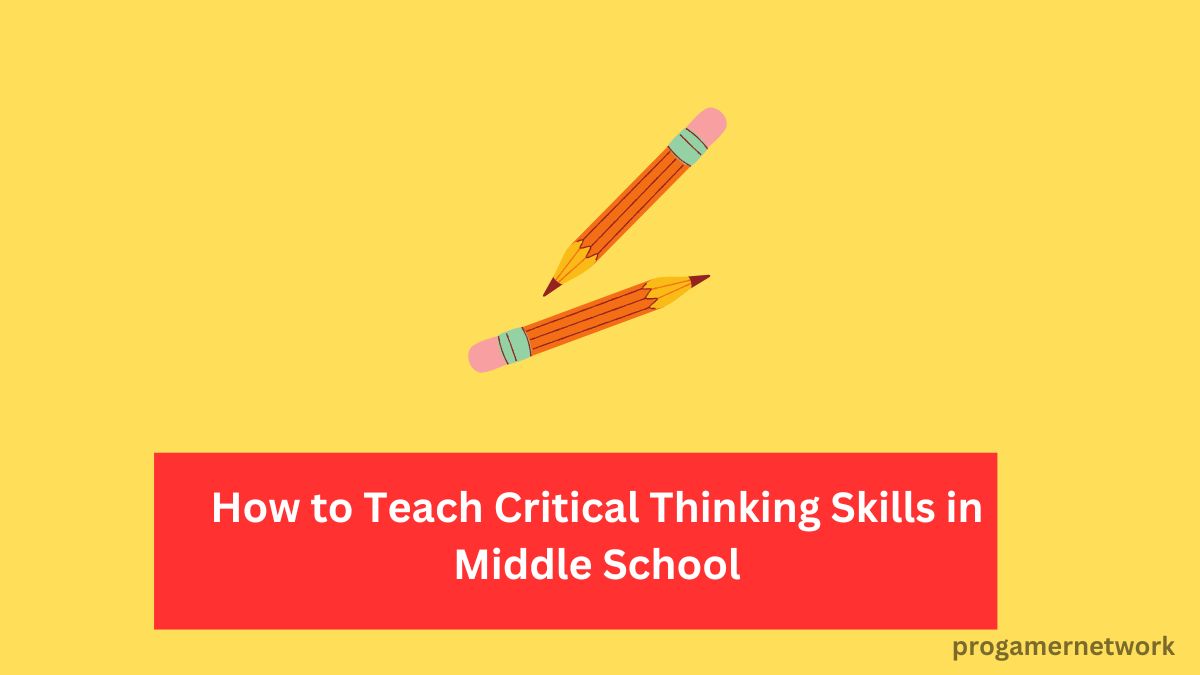Critical thinking skills are more important than ever. They enable students to analyze information, make informed decisions, and solve problems creatively. For middle schoolers, developing these skills can set the foundation for success in high school and beyond.
The Role of Middle School in Development
Middle school is a crucial time for intellectual and emotional growth. As students transition from childhood to adolescence, teaching them how to think critically can help them navigate challenges, both academically and socially.
Understanding Critical Thinking
What Is Critical Thinking?
At its core, critical thinking involves evaluating information and arguments, identifying biases, and synthesizing knowledge to form reasoned conclusions. It’s not just about what you think; it’s about how you think.
Key Components of Critical Thinking
Critical thinking encompasses several key components, including analysis, evaluation, inference, and explanation. Understanding these elements can help students break down complex issues and engage with content more deeply.
Strategies for Teaching Critical Thinking
Encourage Questioning
Types of Questions to Ask
One of the best ways to foster critical thinking is by encouraging students to ask questions. Promote curiosity by asking open-ended questions that require more than a yes or no answer. For example, instead of asking, “Is this character good or bad?” try, “What evidence do you have to support your opinion about this character?”
Foster Discussion and Debate
Creating a Safe Space for Opinions
Creating an environment where students feel safe to express their opinions is vital. Facilitate discussions and debates on relevant topics, allowing students to articulate their viewpoints and challenge others respectfully. This practice not only hones their critical thinking but also boosts their confidence.
Use Problem-Based Learning
Real-World Problems as Case Studies
Problem-based learning (PBL) is an effective method for teaching critical thinking. Present students with real-world problems that require them to analyze data, research, and propose solutions. For instance, discussing climate change can spark debates on renewable energy and conservation methods.
Integrate Technology
Tools and Resources for Critical Thinking
Leverage technology to enhance critical thinking skills. Use online platforms for research, interactive simulations, and collaborative projects. Tools like Google Docs or Padlet can encourage group brainstorming and critical analysis of shared content.
Activities to Enhance Critical Thinking
Socratic Seminars
How to Conduct a Seminar
Socratic seminars are structured discussions based on a text or topic, where students ask and answer questions to deepen their understanding. As a teacher, facilitate by prompting discussion and encouraging students to support their answers with evidence.
Brainstorming Sessions
Techniques to Generate Ideas
Brainstorming encourages students to think creatively and collaboratively. Use techniques like mind mapping or “Yes, and…” to help students build on each other’s ideas, fostering a culture of innovation and critical thinking.
Role-Playing Scenarios
Learning Through Experience
Role-playing scenarios can help students step into different perspectives, encouraging empathy and deeper analysis of complex issues. For example, simulating a town hall meeting on a local issue can help students appreciate diverse viewpoints and the importance of civic engagement.
Assessment of Critical Thinking Skills
Evaluating Student Progress
Assessing critical thinking skills can be challenging. Use rubrics that evaluate students’ ability to analyze, evaluate, and create arguments. Encourage self-assessment to promote reflection on their thought processes.
Feedback and Reflection
Provide constructive feedback that highlights strengths and areas for improvement. Encourage students to reflect on their learning experiences and how they can apply critical thinking in future situations.
Conclusion
The Long-Term Benefits of Critical Thinking
Teaching critical thinking skills in middle school lays the groundwork for lifelong learning. Students who develop these skills are better equipped to tackle challenges, make informed decisions, and contribute positively to society. By fostering critical thinkers today, we prepare them to be innovative leaders tomorrow.
FAQs
Why is critical thinking important in middle school?
Critical thinking helps students navigate complex issues and make informed decisions, which is vital during their formative years.
What are some easy activities to start with?
Start with open-ended questions, simple brainstorming sessions, or group discussions on current events to engage students.
How can parents support critical thinking at home?
Parents can encourage questioning, promote discussions on various topics, and engage in activities that require problem-solving.
Are there specific subjects where critical thinking is more important?
While critical thinking is essential across all subjects, it’s particularly crucial in subjects like science, social studies, and literature, where analysis and evaluation are key.
How can teachers assess critical thinking skills?
Teachers can use rubrics for projects, peer evaluations, and self-assessments to gauge students’ critical thinking abilities effectively.

